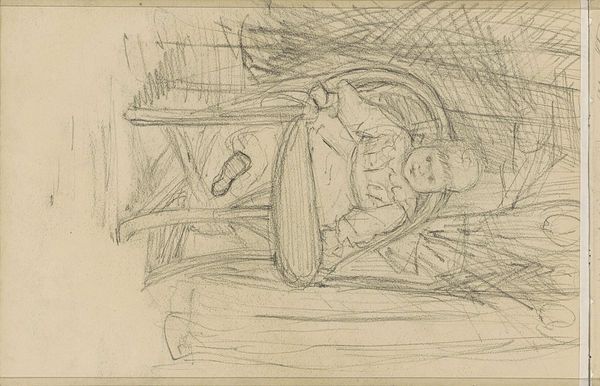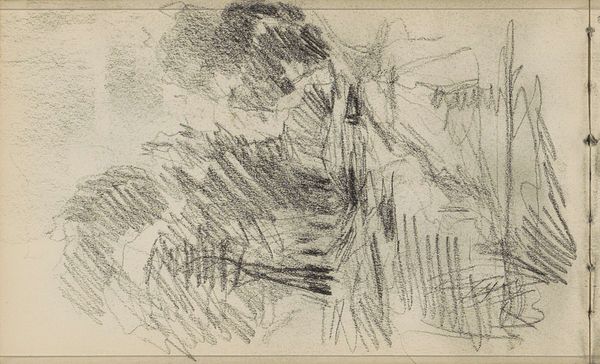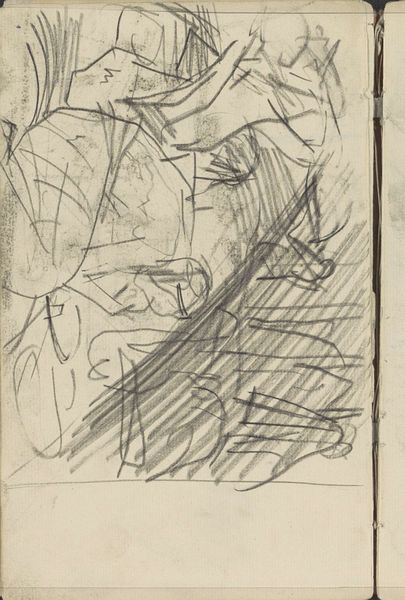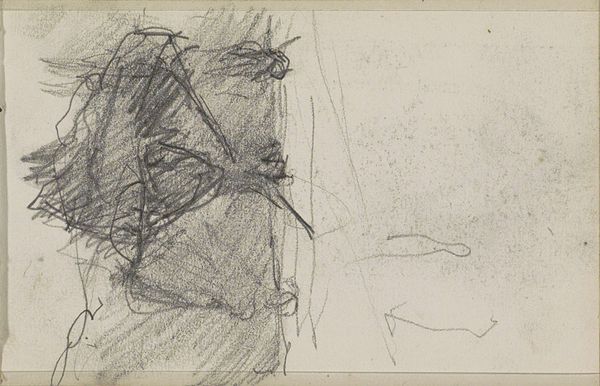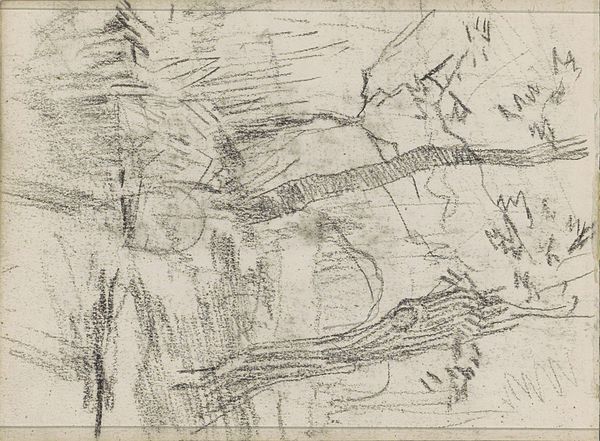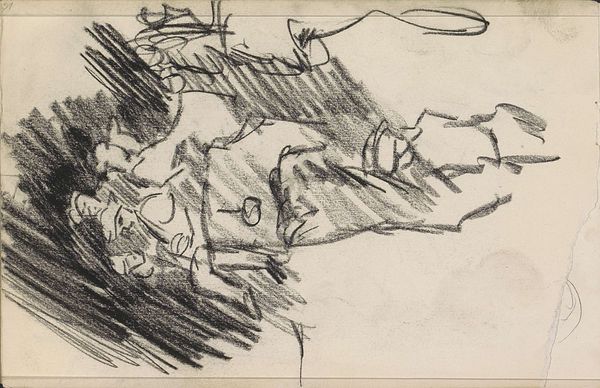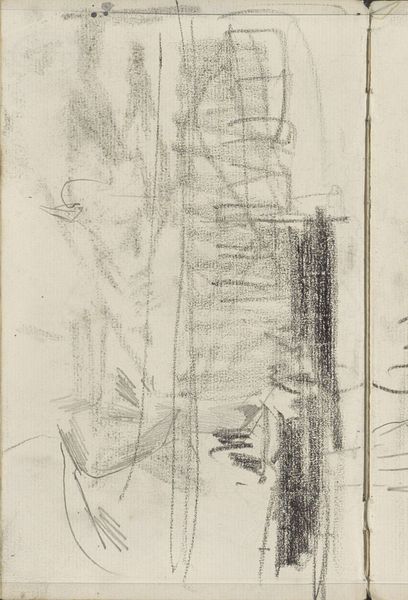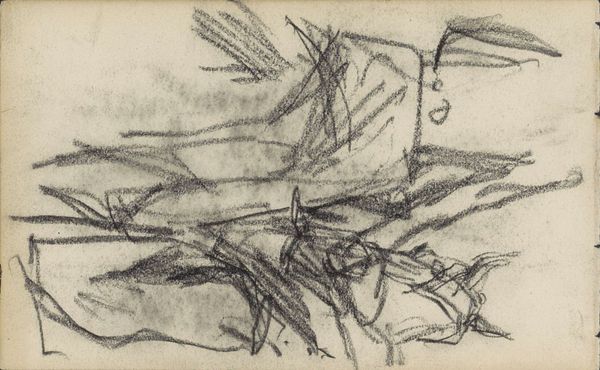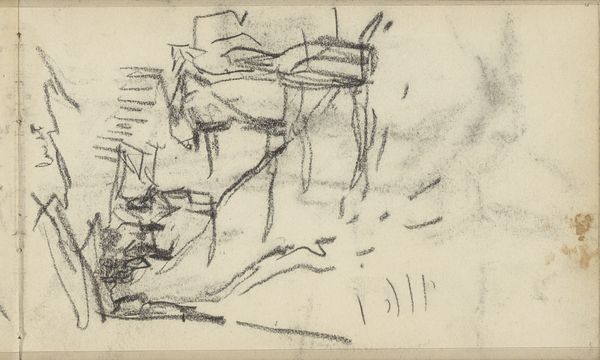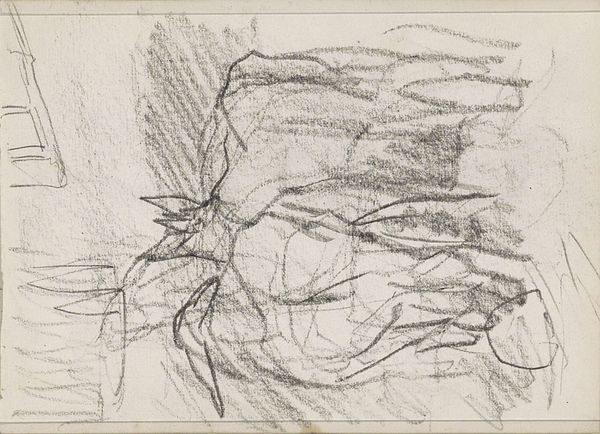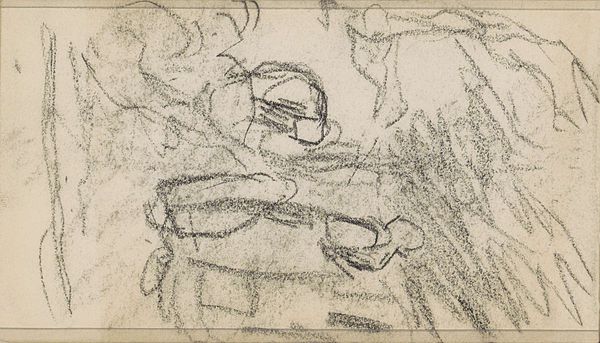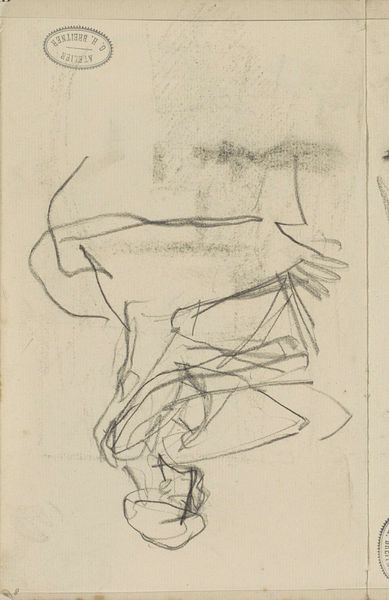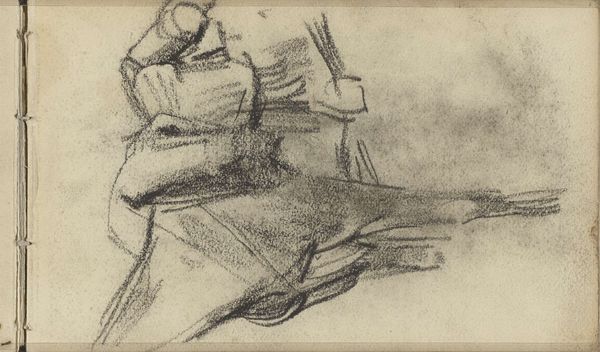
drawing, pencil
#
portrait
#
drawing
#
figuration
#
pencil
#
realism
Copyright: Rijks Museum: Open Domain
Curator: Well, the mood this evokes is one of contemplation and stillness; it feels very intimate. Editor: Indeed. What we have here is a pencil drawing by Johan Antonie de Jonge titled “Child behind a Lectern or Prayer Bench,” likely created between 1901 and 1927. The realism, even in its sketch-like quality, is quite arresting. Curator: You see the hurried and repetitive hatching lines, the softness of the pencil allowing him to build tonal range with fairly simple materials and gestures, perhaps a study? A practice for a future project, honing technique through repetition. I wonder about the brand of pencils he might have used? Editor: More compelling to me is the implied setting – the lectern or prayer bench – that really grounds the artwork in notions of institutionalized education or religion. We are confronted by questions about youth and indoctrination and potentially labor, depending on what’s actually going on at this desk, and the role of children during the time period it was made. The child's identity seems almost subsumed by these greater, more historically rooted entities. Curator: The work seems focused on light, form, the rendering of mass and contour. A skilled and precise approach to the possibilities inherent in a basic medium and simple tools. Pencil on paper: its production value is very democratic and open. De Jonge's mark-making explores volume rather than commenting on larger societal woes; in itself, perhaps, this demonstrates the division between 'high' art production and mundane or lower practices. Editor: But what about access and class? Who gets to practice drawing, to make such artworks at this time? Realism might speak to capturing a recognizable likeness or truth but within that, this child is anonymized; face unseen, downcast gaze—possibly indicative of the position that children hold in society in general. Also, why those years? Does our knowledge of De Jonge help narrow those times? And this prayer bench...whose child are we observing in that position? There are narratives in this child's untold experiences; this is what De Jonge makes present for us. Curator: That intersection of social positionality with something so elemental really interests me. Perhaps even in such apparent simplicity of tools and media the child too experiences certain confinements in a system. Thank you, these perspectives do alter the way I view the sketch! Editor: It enriches the experience, I hope. Now I also find myself moved to observe De Jonge's process with more appreciation too, noting the artist's role in interpreting lived experiences and material means of production, as one and the same.
Comments
No comments
Be the first to comment and join the conversation on the ultimate creative platform.
